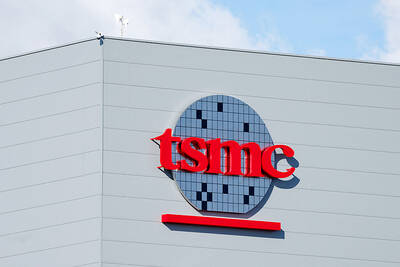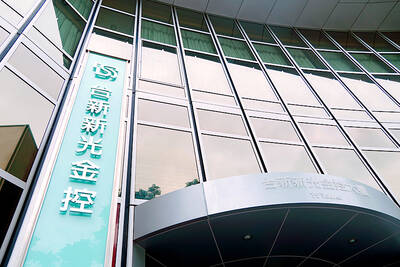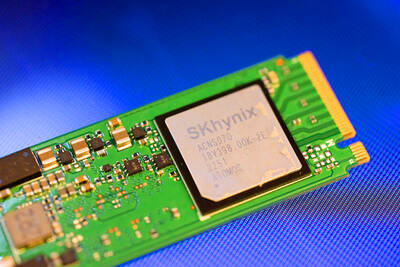In a year of currency surprises from Turkey to Argentina, add another shocker to the list: a 0.6 percent rise in the Hong Kong dollar.
The former British colony’s sleepy foreign exchange market yesterday suddenly came to life, propelling the dollar to its biggest gain in 15 years.
In a territory that keeps its currency on one of the world’s tightest leashes, swings greater than 0.4 percent have only happened three times since Hong Kong widened its trading band in 2005.
“The strengthening came as a huge surprise,” said Mingze Wu (吳明哲), a Singapore-based trader at INTL FCStone Global Payments.
The trigger for yesterday’s gain was something of a mystery. Theories include rising local borrowing costs, position adjustments before upcoming holidays and a buying stampede by short sellers hit with stop losses.
Traders who have been selling the Hong Kong dollar to buy higher-yielding US assets could face a painful squeeze, particularly if they loaded up on leverage to amplify returns.
Derivatives dealers are already bracing for more volatility: A gauge of expected price swings derived from the options market doubled yesterday. Potential catalysts for further turbulence include an expected US Federal Reserve interest rate hike later this month and an increase in Hong Kong banks’ so-called prime rate — something that has not happened since 2006.
The risk for Hong Kong is that higher borrowing costs could trigger a downturn in the territory’s property market, which is by some measures the world’s most expensive.
Home prices in Hong Kong, where real estate is practically a religion, have soared 16 percent over the past 12 months, extending a relentless upward march for most of the past 15 years, a Centaline Property Agency index showed.
A jump in outstanding mortgages pushed the territory’s household debt-to-GDP ratio to a record in the second quarter of this year.
The Hong Kong dollar, which is subject to a trading band of HK$7.75 to HK$7.85 against the greenback, has been stuck near the weak end of that range for the past six months, due in part to selling by carry traders.
However, that dynamic might now be starting to change: The difference between the territory’s three-month interbank borrowing costs and those of the US has narrowed by nearly 1 percentage point since March, when the gap reached its widest in a decade.
The currency yesterday climbed as much as 0.6 percent to HK$7.7930 per US dollar, the strongest level since November last year.
The Hong Kong dollar’s three-month interbank borrowing cost jumped to the highest level in nearly a decade.
“Traders may have come to believe the interest rates will keep rising, with some of them unwinding short-Hong Kong dollar carry trades, and that triggered stop losses and a stampede,” DBS Hong Kong Ltd managing director for treasury and markets Tommy Ong (王良享) said.
His near-term forecast for the exchange rate: somewhere between HK$7.80 and HK$7.83.
Sue Trinh, head of Asia foreign exchange strategy at Royal Bank of Canada in Hong Kong, predicted that yesterday’s move would be short-lived.
She forecast that the currency would weaken again as the territory’s economic growth slows alongside China’s.
“In the longer term, the gains are not sustainable,” Trinh said. “The Hong Kong dollar will be back to HK$7.85 in due course.”

Taiwan Semiconductor Manufacturing Co (TSMC, 台積電) secured a record 70.2 percent share of the global foundry business in the second quarter, up from 67.6 percent the previous quarter, and continued widening its lead over second-placed Samsung Electronics Co, TrendForce Corp (集邦科技) said on Monday. TSMC posted US$30.24 billion in sales in the April-to-June period, up 18.5 percent from the previous quarter, driven by major smartphone customers entering their ramp-up cycle and robust demand for artificial intelligence chips, laptops and PCs, which boosted wafer shipments and average selling prices, TrendForce said in a report. Samsung’s sales also grew in the second quarter, up

On Tuesday, US President Donald Trump weighed in on a pressing national issue: The rebranding of a restaurant chain. Last week, Cracker Barrel, a Tennessee company whose nationwide locations lean heavily on a cozy, old-timey aesthetic — “rocking chairs on the porch, a warm fire in the hearth, peg games on the table” — announced it was updating its logo. Uncle Herschel, the man who once appeared next to the letters with a barrel, was gone. It sparked ire on the right, with Donald Trump Jr leading a charge against the rebranding: “WTF is wrong with Cracker Barrel?!” Later, Trump Sr weighed

HEADWINDS: Upfront investment is unavoidable in the merger, but cost savings would materialize over time, TS Financial Holding Co president Welch Lin said TS Financial Holding Co (台新新光金控) said it would take about two years before the benefits of its merger with Shin Kong Financial Holding Co (新光金控) become evident, as the group prioritizes the consolidation of its major subsidiaries. “The group’s priority is to complete the consolidation of different subsidiaries,” Welch Lin (林維俊), president of the nation’s fourth-largest financial conglomerate by assets, told reporters during its first earnings briefing since the merger took effect on July 24. The asset management units are scheduled to merge in November, followed by life insurance in January next year and securities operations in April, Lin said. Banking integration,

LOOPHOLES: The move is to end a break that was aiding foreign producers without any similar benefit for US manufacturers, the US Department of Commerce said US President Donald Trump’s administration would make it harder for Samsung Electronics Co and SK Hynix Inc to ship critical equipment to their chipmaking operations in China, dealing a potential blow to the companies’ production in the world’s largest semiconductor market. The US Department of Commerce in a notice published on Friday said that it was revoking waivers for Samsung and SK Hynix to use US technologies in their Chinese operations. The companies had been operating in China under regulations that allow them to import chipmaking equipment without applying for a new license each time. The move would revise what is known